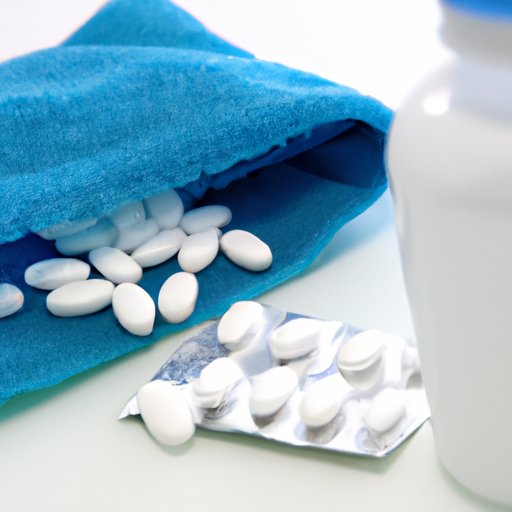
Introduction
Lactic acid is a byproduct of the body’s metabolism that can build up during intense exercise or in other situations where the body is not getting enough oxygen. This buildup can cause pain and discomfort, making it difficult to perform everyday activities. In this article, we will explore strategies for reducing lactic acid buildup, including exercise, diet and hydration, alternative therapies, OTC pain medications, rest and recovery, and when to seek medical attention.
The Science Behind Lactic Acid
When the body does not get enough oxygen, it turns to anaerobic metabolism, which produces lactic acid as a byproduct. This buildup of lactic acid can cause a burning sensation in the muscles during exercise, as well as soreness and stiffness after exercise. Understanding the role of lactic acid in the body can help individuals take steps to reduce its harmful effects.
Exercise Strategies to Reduce Lactic Acid Buildup
Regular exercise can help reduce lactic acid buildup by improving the body’s ability to use oxygen and increasing blood flow to the muscles. Warming up before exercise and cooling down after exercise can also help reduce the buildup of lactic acid. Interval training, which involves short bursts of high-intensity exercise, can also be effective in reducing lactic acid buildup.
Proper Diet and Hydration
Diet and hydration can both impact lactic acid buildup. Choosing foods that are rich in nutrients that help reduce inflammation can help ease symptoms of lactic acid buildup. Staying hydrated can also help reduce the effects of lactic acid. Drinking plenty of water and electrolyte-rich beverages can help prevent dehydration and reduce muscle cramps and soreness.
Alternative Therapies
Alternative therapies can also be effective in reducing lactic acid buildup. Stretching can be effective in reducing muscle stiffness, while foam rolling can help break up the knots and tensions that cause pain and discomfort. Massage can also help relax muscles and reduce inflammation.
Over-the-Counter Pain Medication
OTC pain medications can be effective in reducing the pain and discomfort associated with lactic acid buildup. Nonsteroidal anti-inflammatory drugs (NSAIDs) like aspirin, ibuprofen, and naproxen can help reduce inflammation and relieve pain. Acetaminophen can also be effective in reducing pain, but does not reduce inflammation.
Rest and Recovery
Rest and recovery are crucial for reducing lactic acid buildup. Allowing time for the body to rest and repair after exercise can help prevent injury and reduce lactic acid buildup. Incorporating rest and recovery into an exercise routine can help reduce the harmful effects of lactic acid and improve overall health and well-being.
When to Seek Medical Attention
While lactic acid buildup is a normal part of the body’s metabolic process, it can also be a sign of more serious medical conditions. Chronic or severe lactic acid buildup should be evaluated by a doctor to rule out underlying medical conditions.
Conclusion
Reducing lactic acid buildup requires a comprehensive approach that includes a variety of strategies, including exercise, diet, hydration, alternative therapies, OTC pain medications, rest and recovery, and medical attention when necessary. By taking a holistic approach, individuals can reduce the pain and discomfort associated with lactic acid buildup and improve overall health and well-being.




